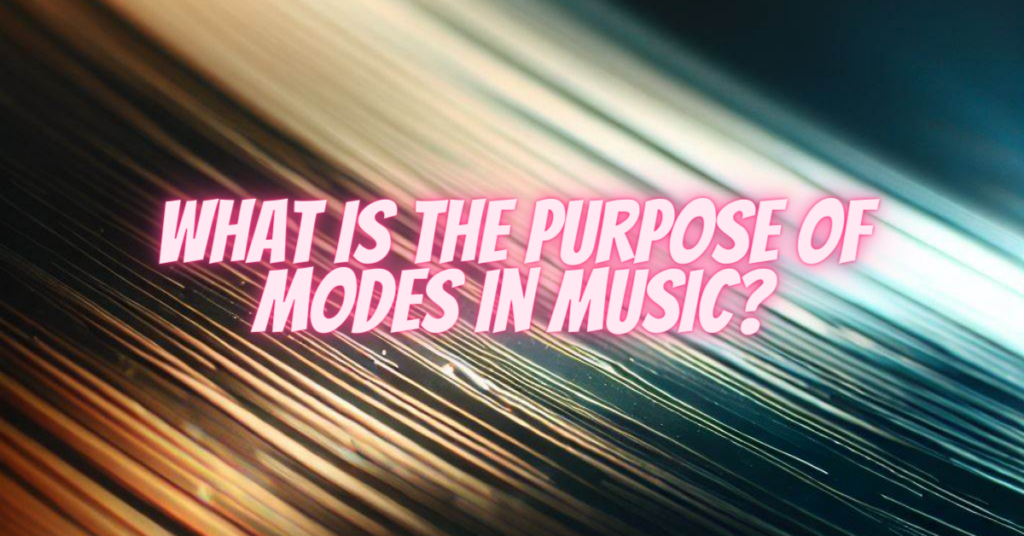Modes, a concept deeply rooted in music theory, have been instrumental in shaping the rich tapestry of musical compositions throughout history. Understanding modes is like learning the grammar of a language; it empowers musicians to communicate nuanced emotions, explore diverse tonalities, and create unique sonic experiences. In this article, we will explore the purpose of modes in music, delving into their origins, characteristics, and the creative possibilities they offer to musicians.
1. Historical Significance:
Modes have ancient origins, dating back to early musical traditions in various cultures. They provided the foundation for melodies in both Western and non-Western music. In Western music, modes were prevalent in medieval and Renaissance compositions before the widespread use of the major and minor scales. Understanding modes allows musicians to appreciate the historical context of compositions and interpret them with authenticity.
2. Emotional Expression:
Each mode has its unique set of intervals, resulting in distinct emotional qualities. For example, the major scale evokes feelings of brightness and cheerfulness, while the Dorian mode carries a slightly melancholic and jazzy vibe. By choosing specific modes, composers and musicians can convey specific emotions and moods in their music. Modes act as emotional palettes, enabling artists to paint intricate sonic landscapes.
3. Exploring Tonalities:
Modes provide musicians with a broader range of tonalities beyond the conventional major and minor scales. They allow for the exploration of diverse musical worlds, from the mystical sounds of the Phrygian mode to the exotic flavors of the Mixolydian mode. Musicians can use modes to infuse their compositions with cultural influences, experiment with unconventional harmonies, and venture into uncharted musical territories.
4. Modal Interplay and Harmonic Complexity:
Modes can be interchanged within a piece of music, creating complex harmonic interplay. This intermodal exploration adds depth and sophistication to compositions, enabling musicians to craft intricate melodies and harmonies. Modal interchange, also known as modal borrowing, allows composers to seamlessly transition between modes, adding tension, resolution, and unexpected twists to their musical narratives.
5. Modal Jazz and Modern Applications:
In jazz music, modes have played a significant role in shaping the genre’s improvisational techniques. Modal jazz compositions, popularized by artists like Miles Davis, use specific modes as the basis for extended improvisational sections. In modern music, modes continue to be embraced by composers and performers, especially in genres like fusion, world music, and progressive rock, where musicians push the boundaries of traditional tonalities.
Conclusion
Modes in music are not just theoretical constructs; they are powerful tools that enable musicians to convey emotions, explore diverse tonalities, and create unique musical experiences. By understanding and harnessing the potential of modes, musicians can infuse their compositions with depth, expressiveness, and complexity. Whether it’s crafting emotive melodies, experimenting with harmonic richness, or venturing into innovative genres, modes serve as the foundation upon which musical creativity flourishes. Embracing the world of modes opens the door to endless possibilities, allowing musicians to embark on a sonic journey that transcends musical boundaries and captivates the hearts of listeners around the world.


